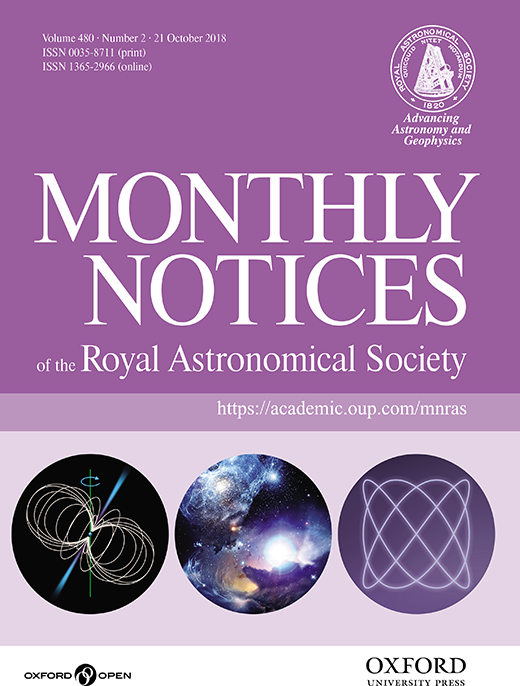-
Views
-
CiteCitation
Nathan Smith, Armin Rest, Jennifer E Andrews, Tom Matheson, Federica B Bianco, Jose L Prieto, David J James, R Chris Smith, Giovanni Maria Strampelli, A Zenteno; Exceptionally fast ejecta seen in light echoes of Eta Carinae’s Great Eruption, Monthly Notices of the Royal Astronomical Society, Volume 480, Issue 2, 21 October 2018, Pages 1457–1465, https://doi.org/10.1093/mnras/sty1479
Download citation file:
© 2018 Oxford University Press
Close -
Share
ABSTRACT
In our ongoing study of η Carinae’s light echoes, there is a relatively bright echo that has been fading slowly, reflecting the 1845–1858 plateau phase of the eruption. A separate paper discusses its detailed evolution, but here we highlight one important result: the Hα line in this echo shows extremely broad emission wings that reach − 10 000 km s−1 to the blue and + 20 000 km s−1 to the red. The line profile shape is inconsistent with electron scattering wings, so the broad wings indicate high-velocity outflowing material. To our knowledge, these are the fastest outflow speeds ever seen in a non-terminal massive star eruption. The broad wings are absent in early phases of the eruption in the 1840s, but strengthen in the 1850s. These speeds are two orders of magnitude faster than the escape speed from a warm supergiant, and 5–10 times faster than winds from O-type or Wolf–Rayet stars. Instead, they are reminiscent of fast supernova ejecta or outflows from accreting compact objects, profoundly impacting our understanding of η Car and related transients. This echo views η Car from latitudes near the equator, so the high speed does not trace a collimated polar jet aligned with the Homunculus. Combined with fast material in the Outer Ejecta, it indicates a wide-angle explosive outflow. The fast material may constitute a small fraction of the total outflowing mass, most of which expands at ∼600 km s−1. This is reminiscent of fast material revealed by broad absorption during the pre-supernova eruptions of SN 2009ip.


